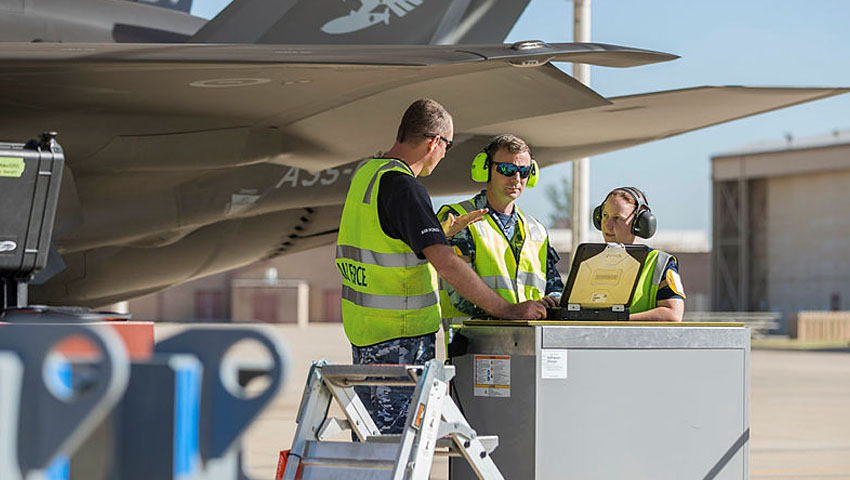With the F-35 Joint Strike Fighter expected to rewrite the way the Royal Australian Air Force conducts air combat operations, keeping the fifth-generation marvel combat effective is emerging as a major focus for the Air Force.
To continue reading the rest of this article, please log in.
Create free account to get unlimited news articles and more!
As Air Force’s fleet of the F-35A Joint Strike Fighter aircraft continues to grow, the quality and delivery of highly trained Air Force maintainers is exceeding expectations.
The Royal Australian Air Force’s fifth-generation capabilities need a fifth-generation workforce – a workforce that is capable of adapting to the technology-driven joint force of the future, one the F-35 is going to play an increasingly important role in.
The Air Combat Transition Office Workforce Planning Manager, Wing Commander September Clare, said the current data snapshot of the workforce was promising.
WGCDR Clare said, “As of mid-October 2019, the RAAF has 103 Australian-based trained maintainers working on our current six F-35s and stand ready to support the additional seven jets due to be delivered at the end of the year.
“I’m continually impressed by the innovative approaches the training staff at the integrated training centre have to training development, which has resulted in the accelerated delivery of maintenance training to support the F-35 capability,” WGCDR Clare said, adding that training a specialist workforce of maintainers required deep-dive analysis and significant planning by a dedicated team.
Recent data also confirmed the continued trend of high training output. Another 32 F-35A maintainers will be on course in October 2019 and, in comparison to the performance of the same period last year, maintenance training numbers throughout have quadrupled.
The Director Air Combat Transition Office, Group Captain John Haly, said an important training standard had been set.
“The skill of our people and the in-depth planning for our technical workforce have positioned us well to accept our new F-35A Lightning II aircraft from the production line. Fundamentally, the training data reflects our ability to be self-sufficient in Australia and demonstrates Air Force capacity to deliver effective specialist training on this exciting new capability,” GPCAPT Haly explained.
The Lockheed Martin F-35 Joint Strike Fighter is billed as a catalyst for the fifth-generation revolution, changing the face and capability of the Royal Australian Air Force (RAAF) and the wider Australian Defence Force (ADF).
“This is a significant achievement for the Australian F-35A Lightning II community,” GPCAPT Haly added.
Successful management and the timely delivery of a trained workforce extends to aircrew, which is also running ahead of schedule. Twenty-five pilots have been converted to the F-35A (14 of them still embedded in a United States Air Force squadron as instructors), an additional three are being trained in the US and two more in Australia.
For the RAAF, the F-35A’s combination of full-spectrum low-observable stealth coatings and materials, advanced radar-dispersing shaping, network-centric sensor and communications suites – combined with a lethal strike capability – means the aircraft will be the ultimate force multiplying, air-combat platform.
The F-35A – the variant chosen by the RAAF – will have with a projected life of 30 years in service. Ten nations are currently flying F-35s, including the US, UK, Italy, Norway, Israel and Japan. The first of Australia’s F-35A aircraft are now based on home soil after a period of training and development at Luke Air Force Base in Arizona, USA, plus an epic Pacific Ocean crossing in December 2018.
More than 340 F-35s are operating today with partner nations, more than 700 pilots and 6,500 maintainers have been trained, and the F-35 fleet has surpassed more than 170,000 cumulative flight hours.
Over the coming years, Australia will purchase 72 of the advanced fifth-generation fighter aircraft as part of the $17 billion AIR 6000 Phase 2A/B program, which is aimed at replacing the ageing F-18A/B Classic Hornets that have been in service with the RAAF since 1985.
Stephen Kuper
Steve has an extensive career across government, defence industry and advocacy, having previously worked for cabinet ministers at both Federal and State levels.

 Login
Login








